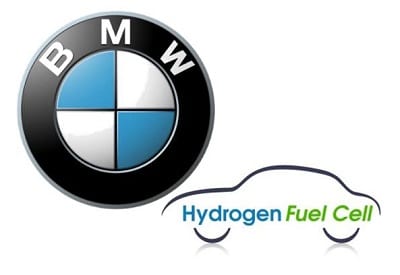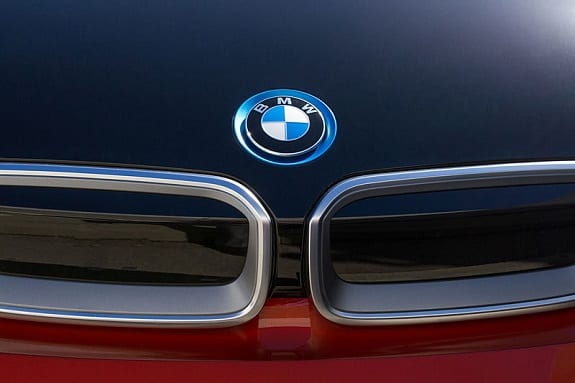
BMW believes fuel cell technology will have a future in transportation
May 24, 2016Fuel cells and batteries may co-exist, but hybrids may vanish
Clean transportation is gaining momentum, and many automakers are beginning to show support for hydrogen fuel cells over batteries. This has created some controversy, as some companies believe that fuel cell technology is not capable of meeting consumer needs in the same way that batteries are. BMW, however, believes that both fuel cell vehicles and battery electrics will co-exist in the future, offering consumers more options when it comes to clean transportation. The vehicles that may not survive into the future, however, are plug-in hybrids.
Hybrids are meant to serve as a bride to help consumers embrace clean transportation
Merten Jung, head of fuel cell development for BMW, believes that both fuel cells and batteries have a future in clean transportation. Plug-in hybrids, however, only exist to smooth the transition from conventional vehicles to cleaner solutions. Jung notes that fuel cell technology has an edge over batteries in that fuel cell vehicles feature a quick refueling time. These vehicles are also more efficient than electric vehicles, with some being able to travel more than 300 miles on a single tank of hydrogen fuel. The problem, however, is that fuel cell vehicles lack the infrastructure they need to become successful.
Fuel cells may be better suited for large vehicles
 Vehicle size may become one of the factors that determines whether or not fuel cell vehicles will beat out their battery-powered counterparts. BMW believes that fuel cells will be well suited for larger vehicles, even those as large as tanks. Smaller vehicles, however, may benefit more from batteries, as relatively small battery systems can be used to provide them with the power that they need.
Vehicle size may become one of the factors that determines whether or not fuel cell vehicles will beat out their battery-powered counterparts. BMW believes that fuel cells will be well suited for larger vehicles, even those as large as tanks. Smaller vehicles, however, may benefit more from batteries, as relatively small battery systems can be used to provide them with the power that they need.
Partnerships could help mitigate the costs associated with fuel cell development
BMW and Toyota are currently working together to develop a hydrogen drivetrain. While BMW notes that it would have invested in such a venture on its own, the costs associated with fuel cells makes it more practical for the automaker to work with other companies. The automaker is also investing in the development of new hydrogen fuel stations, hoping to bolster the hydrogen infrastructure needed for fuel cell vehicles to find success among consumers.

 HFN News is your leading source for fresh hydrogen and renewable energy updates. Amid the fast-paced growth of hydrogen companies, we provide top-notch news and insights about this exciting sector. Our coverage spans from hydrogen cars to global sustainable initiatives, and we highlight the latest in green jobs and developing hydrogen hubs. We invite you to share your local hydrogen news and explore today’s renewable energy job listings on our site. Thanks for choosing HFN News as your trusted guide to the hydrogen and renewable energy world!
HFN News is your leading source for fresh hydrogen and renewable energy updates. Amid the fast-paced growth of hydrogen companies, we provide top-notch news and insights about this exciting sector. Our coverage spans from hydrogen cars to global sustainable initiatives, and we highlight the latest in green jobs and developing hydrogen hubs. We invite you to share your local hydrogen news and explore today’s renewable energy job listings on our site. Thanks for choosing HFN News as your trusted guide to the hydrogen and renewable energy world!
Dear Ladies and gentlemen
My name is Kimitaka Yamane, Doctor of Engineering.
I have engaged in the development of DI hydrogen fueled engines and vehicles for more than 40 years since in 1970 at Musashi Instiute of Technology, now Tokyo City University in Tokyo. BMW has also been developing DI hydrogen fueled engines with the people of the Institute of Internal Combustion Engines and Thermodyanmics in Graz University in Austria since 2000. I am very much astonished to see this article that BMW, however, believes that both fuel cell vehicles and battery electrics will co-exist in the future, offering consumers more options when it comes to clean transportation. The vehicles that may not survive into the future, however, are plug-in hybrids. I know the fact that hybride vehicles with diesel fueled engines are capable to provide an equal or a little greater fuel efficiecy than that of hydrogen fuel cell vehicles. If hydrogen is used in place of diesel fuel, the emission problem is overcomed. And internal combustion engines are superior to fuel cell systems in the specific power. And the costs of the vehiles with internal combustion engines and hydrogen fuel because of low purification are much cheaper than that of the vehicles with fuel cell. And the reliability and the durability of the internal combustion engines are much more. The fuel cell need a precious metal such as plutinum. The amount of plutinum in the eaeth is not enough. And also there still remains sulfer poison problem in the fuel cell sytems.
I am much pleased to have the counter comments.
Best regards,
Kimitaka Yamane
Doctor of Engineering
President K. Yamane’s Hydrogen Energy Lab.
370-1 Miyamae, Fujisawa-shi, Kanagawa-ken, 251-0014, Japan
Mobile phone number: +81-90-6657-1257
E-mail address: [email protected]
In modern ICE vehicles you have already implemented in the exhaust catalyst 10 g of Pt. In FC vehickles you Need round about 20 g., so you already could replace 1 to 2. That is much more viable than the Li Problem for EVs. The Li produced today is only enough for 2.5 Mio vehicles.